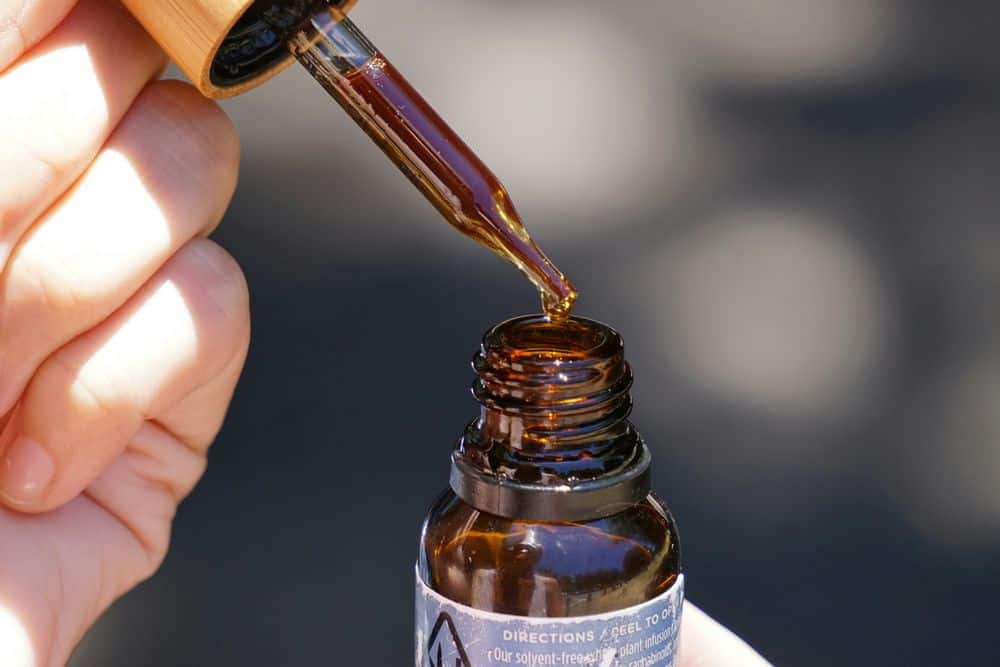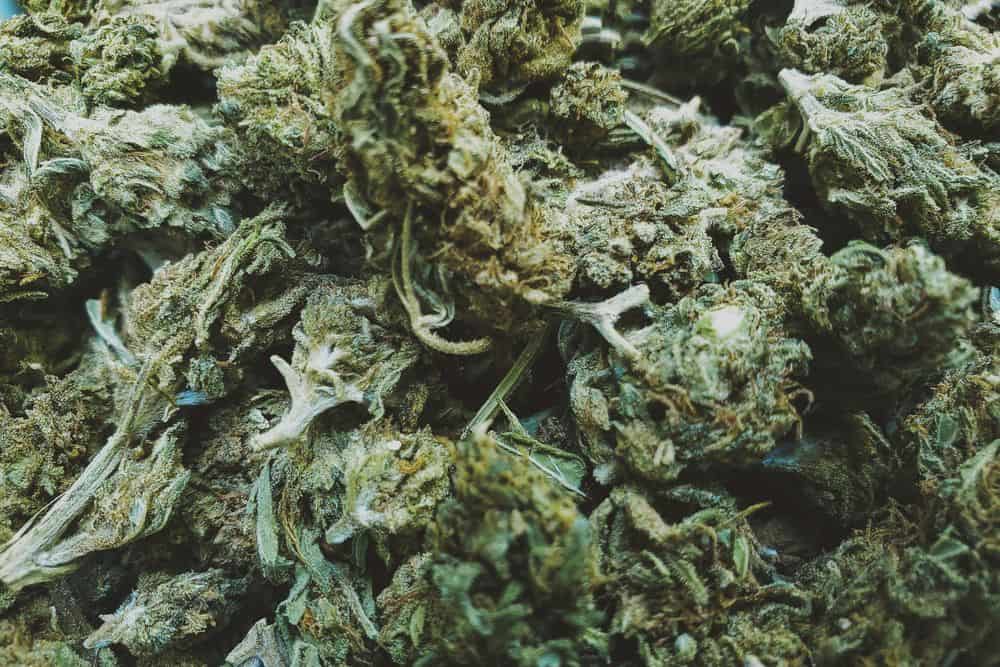 Cannabis tinctures are a great way to consume cannabis.
Cannabis tinctures are a great way to consume cannabis.
They are discrete and allow you to accurate dose your intake.
Even better, you can make your own tinctures fairly easily.
Once you know how to make cannabis tinctures at home, you will see that it is a simple process.
It just takes time.
But you can shorten that considerably by using an alternative method.
That method does have some drawbacks though.
We’ve got step-by-step guides for both methods below, as well as a comparison of each one so you can easily figure out which method is the best one for you.
Contents
How To Make Cannabis Tinctures At Home
Cannabis tinctures are a concentrated liquid form of cannabis made by extracting cannabinoids, such as THC and CBD, from the cannabis plant using alcohol.
This method preserves the beneficial compounds of the plant, resulting in a potent, versatile product that can be used in a variety of ways. Tinctures are typically consumed sublingually (under the tongue), but you can also add them into food and drinks.

Tinctures offer a smokeless, discreet way to consume cannabis, making them a popular choice for medical and recreational users alike. They provide precise dosage control, allowing you to adjust your intake easily to meet your individual needs.
Another advantage of tinctures is that they are fairly easy to make at home. Let’s find out exactly how to do that, beginning with the materials you will need for the process.
Ingredients & Equipment You Will Need
If you want to create cannabis tinctures, you will need some supplies. Here is what you will need:
High-Proof Alcohol (Such As Everclear)
You need high-proof alcohol to extract the cannabinoids and terpenes from the cannabis plant efficiently. Everclear, which is at least 190 proof, is a popular choice because of its potency and purity.
Cannabis Flower Or Concentrate

You can use either cannabis flower or concentrate to make your tincture. Flower is the dried bud of the cannabis plant, while concentrates, such as oils or shatter, are a more potent form of cannabis that have already been processed to remove impurities and increase cannabinoid content.
Mason Jars Or Glass Containers
Mason jars or any other glass containers with tight-fitting lids are ideal for the infusion process. They allow you to store the mixture securely and prevent contamination.
Cheesecloth Or Fine Mesh Strainer
A cheesecloth or fine mesh strainer is necessary for filtering out plant material from the tincture. This ensures a smooth, clear liquid without any unwanted residue.
Dropper Bottles
Dropper bottles are perfect for storing and dispensing your tincture. They allow for easy, precise dosing and are convenient to carry and use.
Funnel
A funnel makes it easier to transfer the tincture from the mason jar to the dropper bottles without spilling and wasting any.
Grinder

A grinder is used to break down the cannabis flower into smaller, uniform pieces. This increases the surface area for alcohol exposure, leading to a more efficient extraction process. If you’re making your tincture from a concentrate, you won’t need a grinder.
Preparation
The first thing you need to do before you can begin creating your tincture is to decarboxylate your weed.
Decarboxylate Your Weed
Decarboxylation (commonly referred to as ‘decarbing’) is a vital step in making cannabis tinctures. It involves heating the cannabis to activate the cannabinoids, converting them from their acidic forms (THCA and CBDA) into their active forms (THC and CBD).
This process is necessary to ensure that the tincture will have the desired psychoactive and therapeutic effects.
Step-by-Step Instructions For Decarbing Cannabis
- Preheat your oven to 240° F (115° C). This is the optimal temperature to activate the cannabinoids without degrading them.
- Use a grinder to break the cannabis flower into small, even pieces. If you’re using whole buds, ensure they are not too tightly packed on the baking tray.
- Line a baking tray with parchment paper and evenly spread the ground cannabis across it. Ensure it forms a single layer for uniform heating.
- Place the baking tray in the preheated oven. Bake for 30-40 minutes, stirring occasionally to ensure even heating. The cannabis should turn a light brownish color and have a dry, crumbly texture.
- Remove the baking tray from the oven and let the cannabis cool down completely. It is now decarboxylated and ready for you to use in making a cannabis tincture.
Measure Your Ingredients
The standard ratio for making cannabis tinctures is 1 gram of cannabis to 1 fluid ounce (approximately 30 ml) of high-proof alcohol. You can adjust this ratio based on your desired potency though.
For example, 2 grams of cannabis per 1 fluid ounce of alcohol will yield a more potent tincture, and using 0.5 grams of cannabis per 1 fluid ounce of alcohol will result in a less potent tincture.
How To Make The Cannabis Tincture

You have two options, when it comes to making cannabis tinctures: cold or warm infusion. We have the instructions for both methods, followed by a comparison to help you figure out which one is better for you.
Cold Infusion Method: Step-by-Step Guide
- Combine Ingredients: Place the decarbed cannabis in a mason jar or glass container and pour the high-proof alcohol over the cannabis, ensuring the cannabis is fully submerged.
- Seal and Shake: Seal the jar tightly with a lid and shake the jar vigorously for a few minutes to mix the cannabis and alcohol thoroughly.
- Store and Infuse: Store the jar in a cool, dark place, such as a cupboard or pantry. Shake the jar once or twice each day to ensure even extraction.
- Infusion Period: Allow the mixture to infuse for at least two weeks, but preferably up to six weeks for a more potent tincture.
- Strain the Tincture: After the infusion period, strain the mixture through a cheesecloth or fine mesh strainer into a clean container to remove plant material. Use a funnel to transfer the tincture into dropper bottles ready for use.
Warm Infusion Method: Step-by-Step Guide
- Combine Ingredients: Place the decarboxylated cannabis in a mason jar or glass container. Pour the high-proof alcohol over the cannabis, ensuring the cannabis is fully submerged.
- Seal and Shake: Seal the jar tightly with a lid. Shake the jar vigorously for a few minutes to mix the cannabis and alcohol thoroughly.
- Heat the Mixture: Place the sealed jar in a water bath on the stove. Use a pot to hold the jar and ensure the water level is high enough to surround the jar without covering the lid. Heat the water to a low simmer (not boiling) and maintain this temperature.
- Infusion Period: Keep the jar in the water bath for 30-60 minutes, shaking it occasionally. Monitor the water temperature to prevent overheating.
- Cool and Strain: Remove the jar from the water bath and let it cool to room temperature. Then strain the mixture through a cheesecloth or fine mesh strainer into a clean container to remove plant material. Use a funnel to transfer the tincture into dropper bottles for easy use.
Cold Infusion Vs Warm Infusion: Which Is Better?
Cold infusion preserves the terpenes and cannabinoids, ensuring a flavorful and therapeutic tincture with minimal risk of alcohol evaporation and safety concerns, but it requires a lengthy infusion period of two to six weeks and regular shaking.
In contrast, warm infusion significantly speeds up the process, producing a potent tincture in just 30-60 minutes, but it risks alcohol evaporation, potential loss of some compounds due to heat, and requires careful monitoring and handling to avoid safety hazards (breaking the jars if the temperature gets too high).
Choosing between the two depends on whether you prioritize quality and safety (cold infusion) or speed and efficiency (warm infusion).
DIY Cannabis Tinctures: Final Thoughts
Making cannabis tinctures at home is much easier than you might think. It is certainly easier than I thought it would be.
The only issue is that it takes a long time. But you can use the warm infusion method to speed that up considerably, as long as you are fine with the drawbacks that method has.
Anonymous says
Hi,
I enjoyed reading your article….found very helpful.
My question is what happens to the alcohol during the infusion period? What happens to the 190 proof?